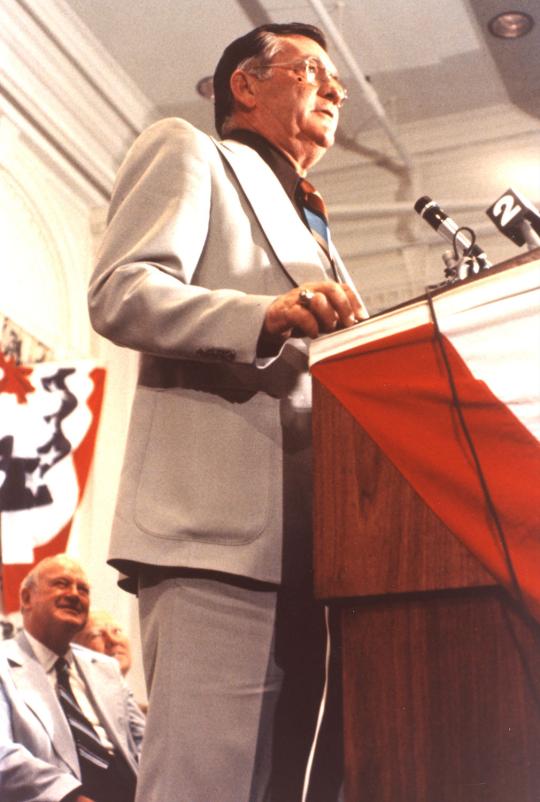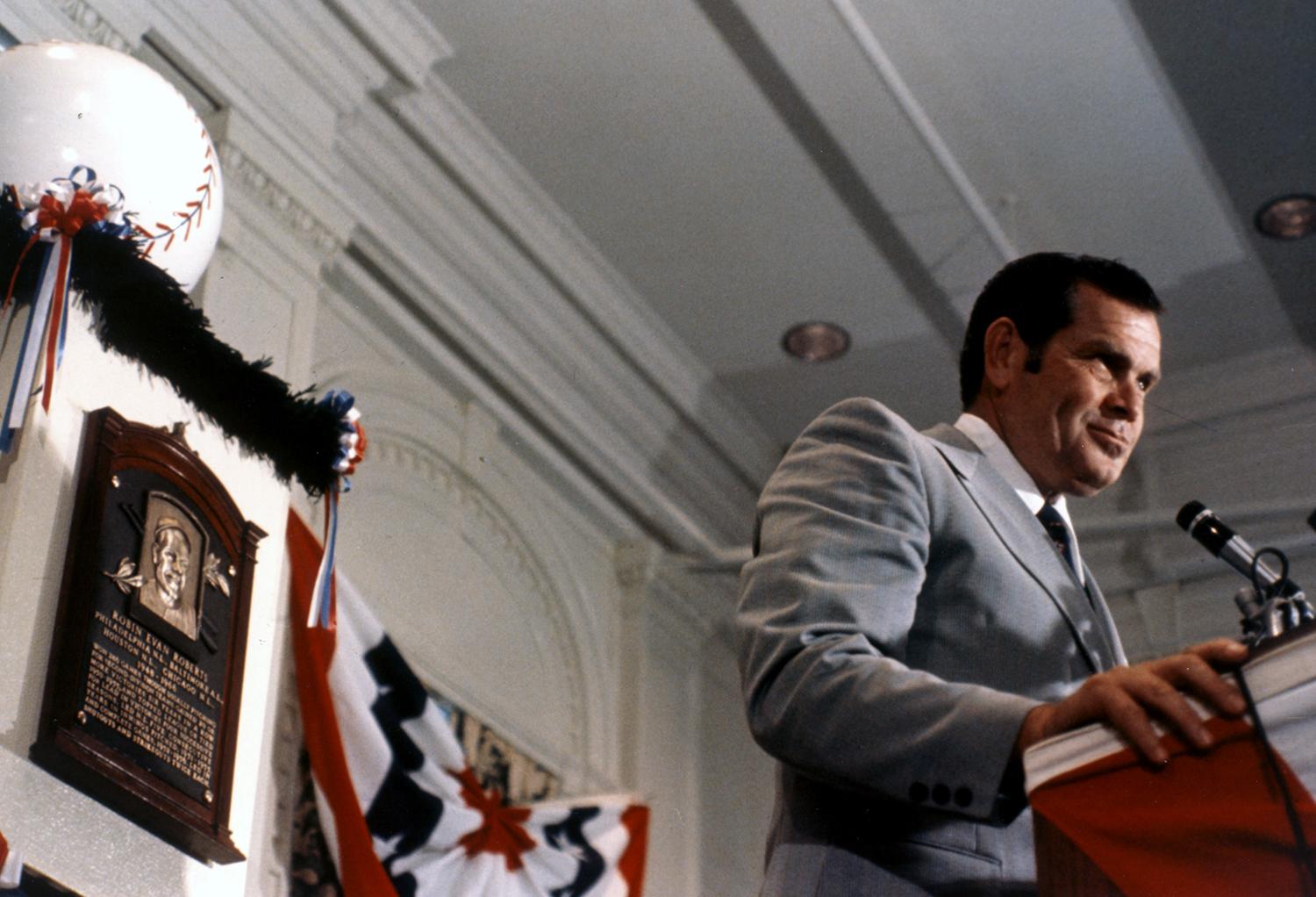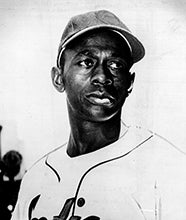- Home
- Our Stories
- Aug. 9, 1976: Class of ’76 inducted at Hall of Fame
Aug. 9, 1976: Class of ’76 inducted at Hall of Fame
When Freddie Lindstrom was 14, his parents decided to send him to the prestigious Loyola Academy in Chicago where he was supposed to begin his journey to being a lawyer. But Lindstrom had other career plans.
Going the baseball route came full circle for Lindstrom on Aug. 9, 1976, when he was inducted into the Hall of Fame. Achieving baseball immortality with Lindstrom was Robin Roberts, Bob Lemon, Cal Hubbard, Roger Connor and Oscar Charleston.
When Lindstrom was 16, a scout from the New York Giants was in the stands when he hit two triples, two doubles and a home run in a game while at Loyola Academy. Shortly after that, he was signed to a professional contract, on his way to studying pitchers and not for the bar exam.
Lindstrom played 13 years in the big leagues and ended his career a lifetime .311 hitter. He finished two seasons with 231 hits, just one of four players to have two or more 231+ hit seasons. He was 18 years, 10 months and 13 days old when he played in the 1924 World Series with the New York Giants and remains the youngest player to appear in a Fall Classic game.
Hall of Fame Membership
There is no simpler, and more essential, way to demonstrate your support than to sign on as a Museum Member.
Accompanying Lindstrom was Robin Roberts, a former pitcher for the Philadelphia Phillies who dominated Major League Baseball from 1950-1955. Roberts was known for his work ethic, and his pitching results showed that. He threw 28 straight complete games from August 1952 to July 1953, setting a record that still stands.
A seven-time All Star, Roberts had the opportunity to start the Mid-Summer Classic five times in his career.
When asked what his favorite memory was from his times as an All Star, he said, “When Mickey Mantle bunted with the wind blowing out in Crosley Field.”
Unlike Roberts, fellow Hall of Fame teammate Bob Lemon didn’t start his professional baseball career as a pitcher. Lemon began playing pro baseball as an infielder and then later as a center fielder. After manager Lou Boudreau heard about Lemon’s pitching capabilities, he experimented with Lemon on the mound. And it worked.
Lemon led the league in complete games five times and wins three times. A seven-time All Star, he also led all of baseball in innings pitched four times.
“I’ve never looked back and regretting anything.” Lemon said. “I’ve had everything in baseball a man could ask for. I’ve been so fortunate.”
After retiring as a player, Lemon went on to manage, winning the World Series with the Yankees in 1978.
Cal Hubbard never played or managed in a single World Series, but he did have the opportunity to umpire in four of them.
But Hubbard had an unconventional path to Cooperstown. Known for his athleticism on the gridiron and not the ball diamond, Hubbard was one of the original inductees into the Pro Football Hall of Fame for his stellar career with the New York Giants and Green Bay Packers.
While Hubbard was playing football, he was also umpiring baseball games. His extensive knowledge of the rulebook earned him a reputation as one of the big league’s best arbiters.
“I started in the Piedmont League in 1928,” Hubbard said. “And then in 1936, when I quit pro football, I was brought to the American League by Will Harridge, then the president.”
Hubbard was the fifth umpire inducted and is one of 10 umpires in the Hall of Fame.
Long before Hubbard was calling games, Roger Connor was making his mark as baseball’s first power hitter. Upon his retirement in 1897, he had hit 138 home runs, a record that stood until Babe Ruth passed it in 1921.
Connor hit .300 in eleven of his 18 big league seasons, including 1885 when hit .371 with 169 hits in 110 games. His power and speed not only allowed him to hit for average, but the two skills also gave him the chance to steal more than 200 bases and hit more than 200 triples.
Even though Oscar Charleston never played major league baseball, his countless contributions to the game while playing in the Negro Leagues earned him a place in Cooperstown in 1976. Considered one of the greatest ball players to ever play in the Negro Leagues, Charleston ranks in the top five in batting average and home runs.
Charleston’s 1921 season with the St. Louis Giants saw him hit .437 with 91 RBI, scoring 104 runs and clubbing 15 homer uns in 76 games.
In 1932 Charleston joined the Pittsburgh Crawfords as a player-manager. While there, he managed some of the greatest players of all-time. Cool Papa Bell, Josh Gibson, Judy Johnson and Satchel Paige all played under Charleston’s leadership.
One of Charleston’s most notable contributions to the game came when he recommended Dodgers’ owner Branch Rickey sign Roy Campanella.
Cady Lowery was the 2017 public relations intern in the Frank and Peggy Steele Internship Program at the National Baseball Hall of Fame and Museum
Related Stories

Lou Brock and Hoyt Wilhelm elected to the Hall of Fame
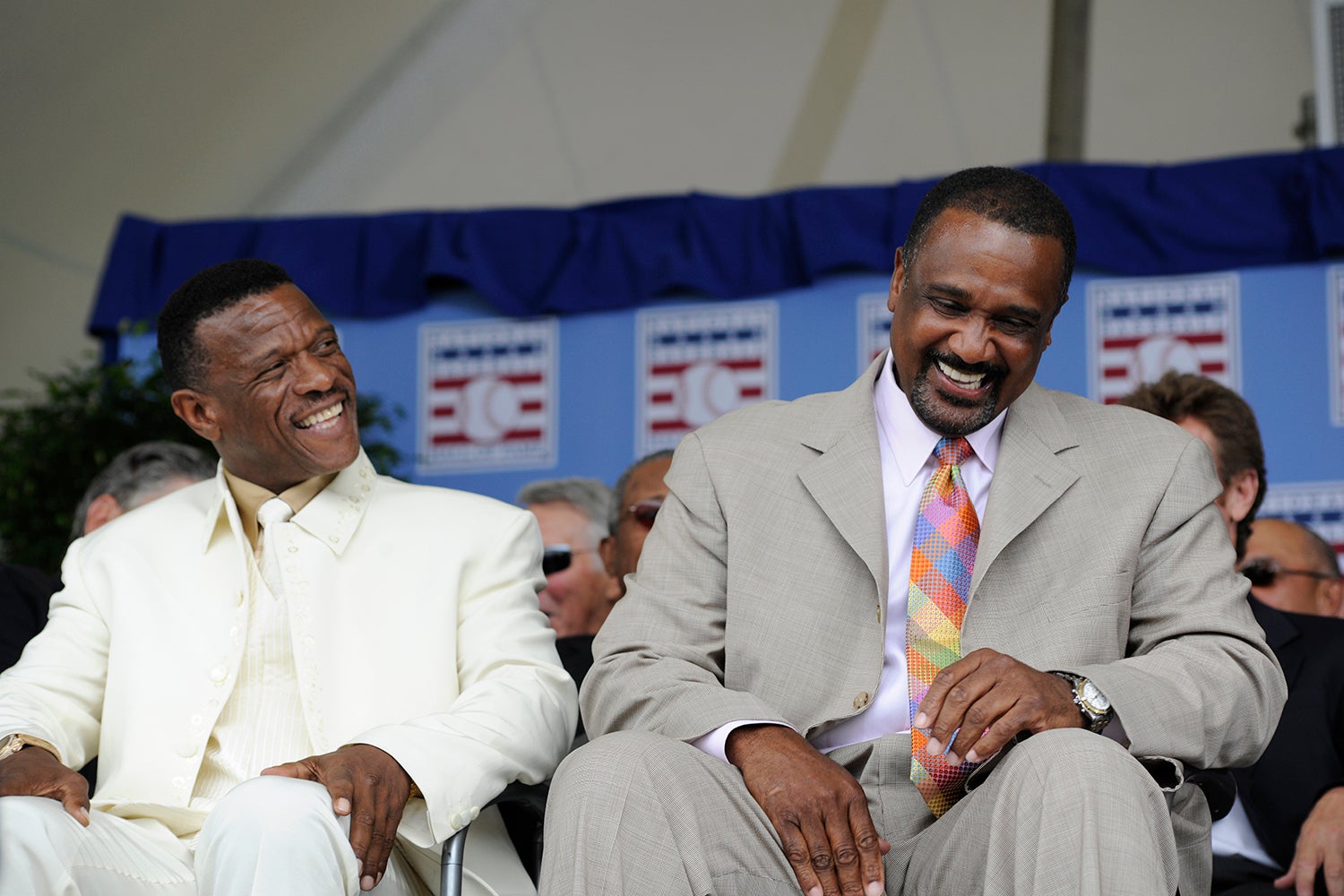
Henderson, Rice and Gordon are inducted into the Hall of Fame
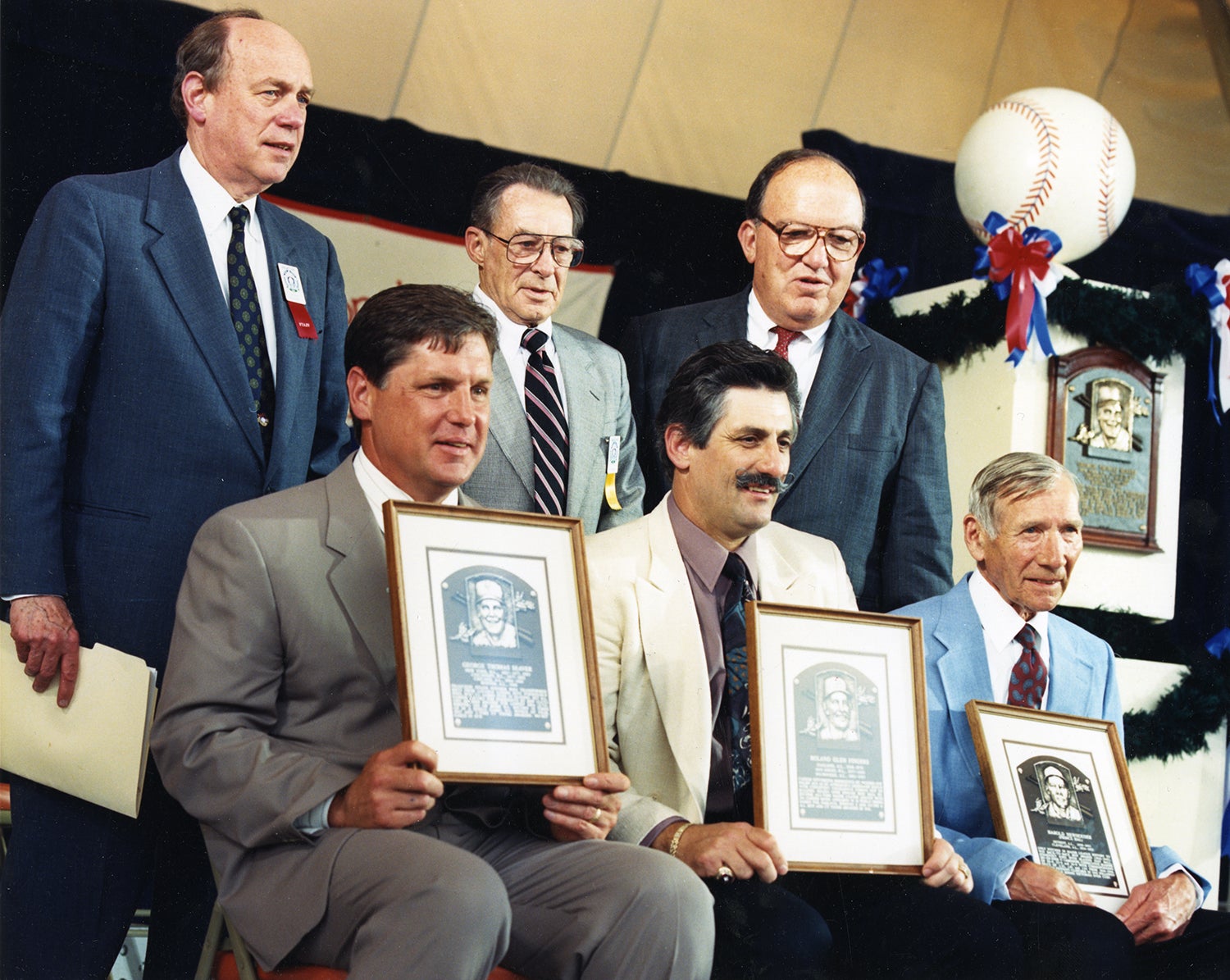
Fingers, McGowan, Newhouser and Seaver are inducted into the Hall of Fame
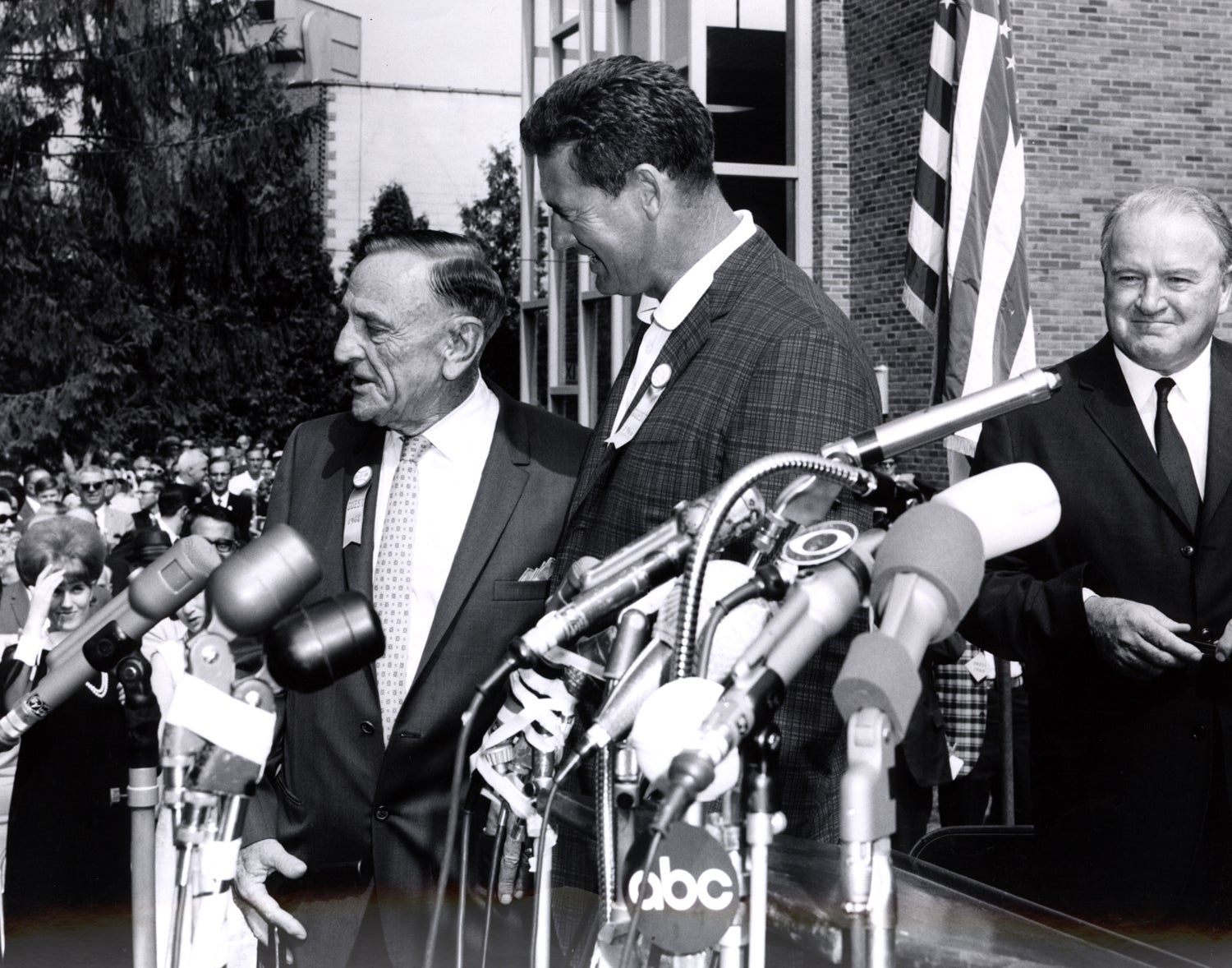
Ted Williams and Casey Stengel are inducted into the Hall of Fame

Lou Brock and Hoyt Wilhelm elected to the Hall of Fame

Henderson, Rice and Gordon are inducted into the Hall of Fame

Fingers, McGowan, Newhouser and Seaver are inducted into the Hall of Fame


